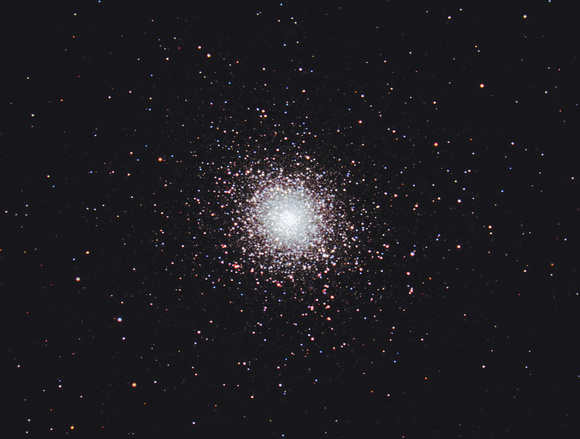Canon 350D Hap Griffin Baader Mod
19x180sec at iso 1600
30 Darks/Flats/Bias
Celestron 9.25 reduced 0.63
Spanning 165 light-years across, M5 is one of the larger globular clusters known. The gravitational sphere of influence of M5, (ie. the volume of space where stars would be gravitationally bound to the cluster and not ripped away from it by the Milky Way's gravitational pull), has a radius of some 200 light-years.
At 13 billion
years old it is also one of the older globulars associated with the Milky Way Galaxy. The distance of M5 is about 24,500 light-years away from
Earth and the cluster contains more than 100,000 stars up to perhaps 500,000 according to some estimates.
M5 is, under extremely good conditions, just visible to the naked eye as a faint "star" near the
star 5 Serpentis.
Binoculars or small
telescopes will identify this cluster as non-stellar while larger telescopes will start to show individual stars, of which the brightest are of
apparent magnitude 12.2.
April 26, 2008


